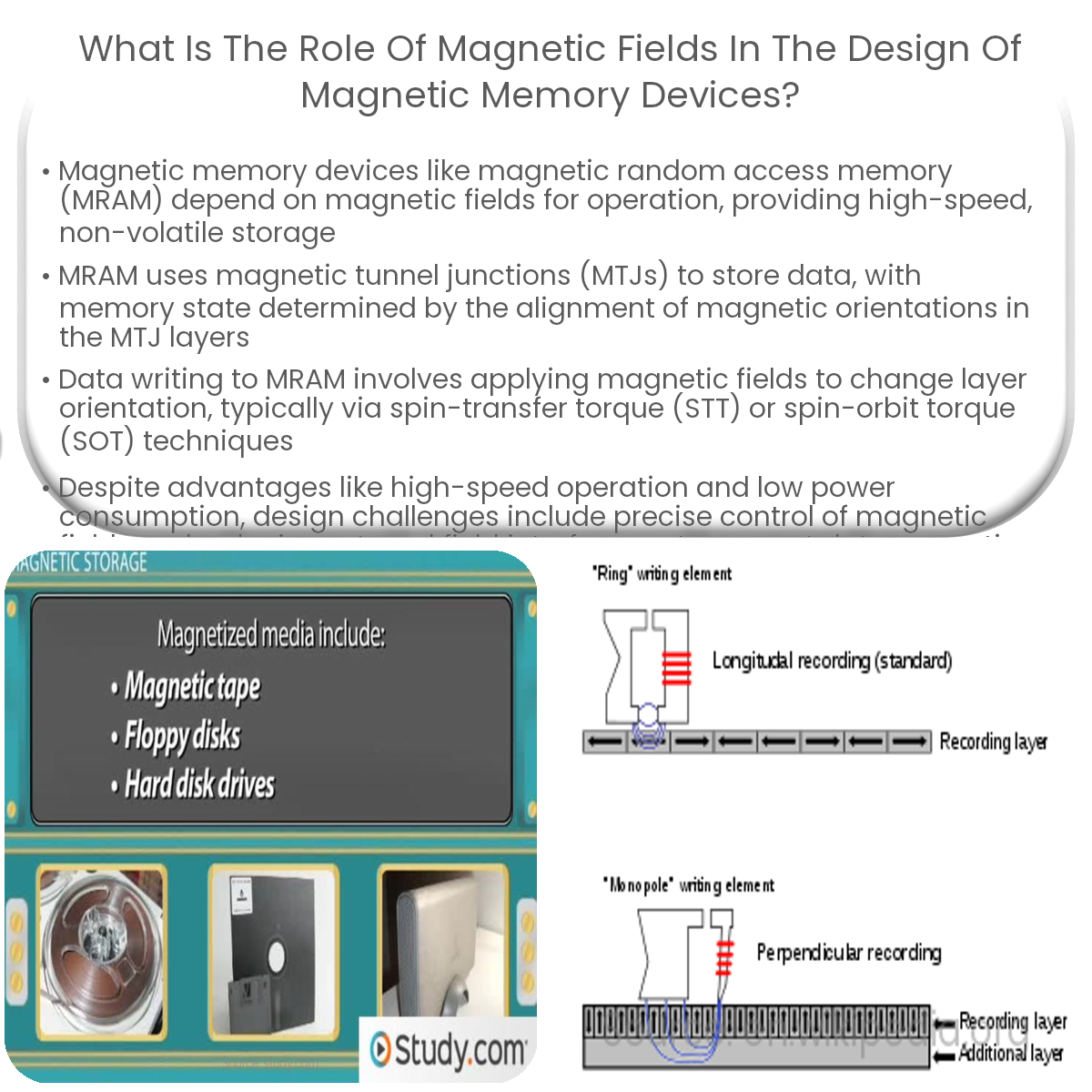Magnetic fields are vital in magnetic memory devices, as they control data storage and retrieval by manipulating magnetic orientations in the device.
Role of Magnetic Fields in Magnetic Memory Device Design
Magnetic memory devices, such as magnetic random access memory (MRAM), rely on magnetic fields for their operation. These devices store data using magnetic storage elements and provide non-volatile storage solutions with high-speed read and write capabilities. The design of magnetic memory devices is centered around the control and manipulation of magnetic fields.
MRAM: A Prominent Magnetic Memory Device
MRAM is a prime example of the role magnetic fields play in memory devices. It utilizes magnetic tunnel junctions (MTJs) to store data. MTJs consist of two ferromagnetic layers separated by an insulating layer. One layer, known as the reference layer, has a fixed magnetic orientation, while the other, the free layer, can switch its orientation under the influence of an external magnetic field.
The memory state of an MRAM cell is determined by the relative alignment of the magnetic orientations of the reference and free layers. When the layers are aligned parallel, the resistance is low, representing a binary ‘1.’ Conversely, when the layers are aligned antiparallel, the resistance is high, representing a binary ‘0.’
Magnetic Field Manipulation in Memory Devices
Writing data to MRAM requires the application of magnetic fields to change the orientation of the free layer. This is typically done using two techniques: spin-transfer torque (STT) and spin-orbit torque (SOT).
- Spin-transfer torque (STT): In STT, a current is passed through the magnetic layers of the MTJ, transferring the spin angular momentum to the free layer. This alters its magnetic orientation, resulting in a change in the memory state of the MRAM cell.
- Spin-orbit torque (SOT): SOT is an alternative method that employs a heavy metal layer adjacent to the free layer. The current passing through the heavy metal layer generates a torque on the free layer, modifying its magnetic orientation and thus the memory state.
Advantages and Challenges
Magnetic memory devices, such as MRAM, offer numerous advantages, including non-volatility, high-speed operation, and low power consumption. However, designing these devices comes with challenges, such as the need for precise control of magnetic fields, reducing interference from external fields, and minimizing the risk of unintended data corruption.
In summary, magnetic fields play a crucial role in the design and operation of magnetic memory devices. Engineers must carefully manipulate and control these fields to ensure reliable performance and data integrity.


